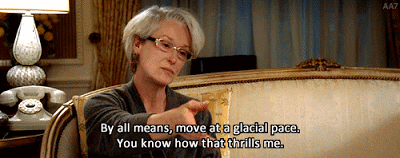How To Write a Book | Reworking Your Novel To Make It Shine
In the last post, I offered advice when it comes to editing your novel. Today we’re going to talk about the next step in editing, which is reworking. Reworking is the process of looking at the story yet again to make sure you’re not missing an opportunity to make your story truly stunning. If you'd rather watch my video on reworking instead of reading this post, feel free to click play below.
We’ll focus on five things at this stage of editing and rewriting:
1. Beginnings and endings that match After you’ve cut, added, and fixed parts of your MS, review your first page and your last page, or first scene and last scene. Think of your novel as a symphony. The last movements of great symphonies refer back to their opening measures. Reflect on your opening as you rewrite your last page. Reflect on your last scene as you rewrite your first paragraph. For examples of openings and closings that are well matched, read the first and last scenes of the following novels: The Great Gatsby by F. Scott Fitzgerald and Carrie by Stephen King.

2. Varied Locations This is the time to review your settings. List them as if your novel were a play or a movie. If you have too many scenes that take place in the bedroom or in the car, find other places for your characters to have the same conversations – perhaps waiting in a line at an amusement park while it’s raining or passing by an abandoned building. Settings should be striking whenever possible without being so odd that they distract from your story. So, make a list of your settings and if you notice they seem to occur in the same places, it's time to brainstorm more interesting environments.

3. Character Arcs Make a list of what each of your main characters is experiencing throughout your story. What emotions is each one going through? Look at these character arcs separately. Each character has his/her own journey through your story. If you find one of your characters is either always hitting the same note (angry in every scene) or flip-flopping too much (let’s say, going from angry to depressed), you may want to make adjustments. Define an overall realistic or desired emotional journey for each individual character and be true to them. This exercise will also let you know if you’ve spent too much time on one character and not enough on another.

4. Glowing Points Glowing points are those phrases, paragraphs, or scenes in your novel that you admire so much that you can hardly get over yourself. Try to rewrite parts of your novel and lift the rest of your writing to that level of excellence. Easier said than done, but it will give you practice and maybe even a few more glowing points. Don't be like this guy:
5. Finesse Lastly, rewrite for finesse, looking for subtle changes that might make your story more refined. Scan for things that don’t look broken from the outside, but could be enhanced by a fix. For example, a flashback might be better in Chapter 9 instead of Chapter 7. Rather than a dead cat in Chapter 11, it should be a dead dog, because that will remind the protagonist of the family dog she had to put to sleep years ago. In Chapter 5, why not have the lady across the hall fail at dialing 911 – maybe her phone battery is dead – so she has to scream down the fire escape like the antagonist’s mother used to do? Scan for the little things that might make your writing more memorable.

In summary, after you’ve finished editing your novel, it’s time to rework it. When reworking your novel, there will be a lot of rewriting. Focus on making sure your beginning and ending match, that your locations vary in your scenes, that your arcs are fully developed for each character, that your glowing points are more than just few and far between, and that you’ve made the necessary changes to make your story more refined.
What other tips do you have for reworking/rewriting your MS? Feel free to leave your comments below! I'd love to hear from you.

Until next time,

Published on February 20, 2016 11:41
No comments have been added yet.



